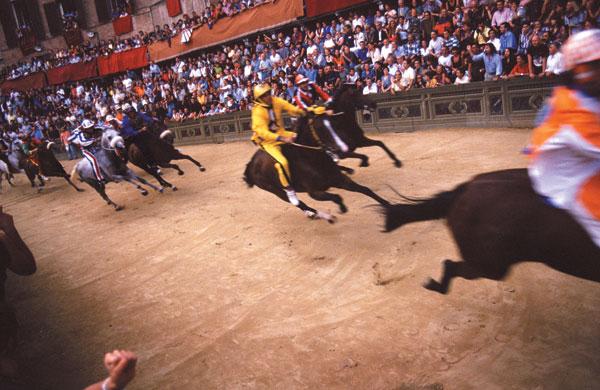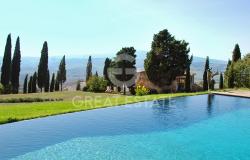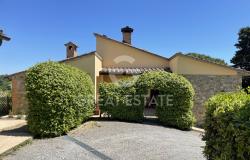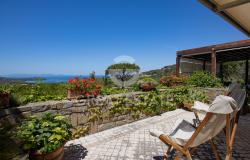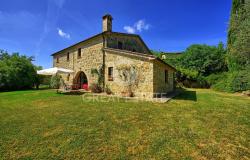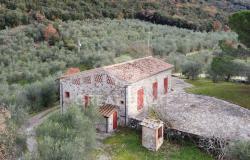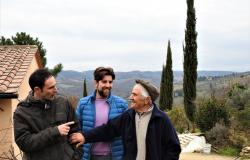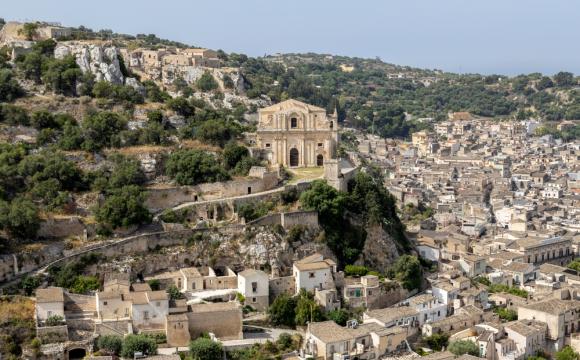Italy’s myriad festivals have always held a fascination for me, but none more so than the Palio of Siena. Three times around a medieval square of unusual shape, this 90-second horse race ignites passions and rivalries that date back centuries. Having read as much as I could find on the subject, I arrived in Siena on Saturday 12th August 2000 to experience for myself i giorni del Palio, the days of the Palio.
Prior to my visit I had written to all 17 contrade in the hope of arranging a visit to their museums. Before leaving for Italy I received an invitation from the Contrada of Drago, the dragon, to visit their museum on Sunday 13th August after the batterie in the Campo, when the horses are run in heats before a final 10 are chosen to participate in the race itself.
The city was alive with the sounds and sights of the Palio as I headed towards the district of the Contrada of Drago. Flags of various contrade flew from every building announcing the particular allegiance of its owner, and young men could be heard down narrow streets practising their drumming technique for the magnificent historical parade in medieval costume that precedes the race itself.
Meeting the Dragons
As arranged, I met Walter Benocci on the steps leading from Piazza Matteotti to the museum of the Contrada of Drago. Walter is the archivist of the contrada and has written detailed descriptions of all the Palios won by Drago since 1650, (35 at that time) and it was his job to show visitors around their museum.
As well as being the name of the race, the palio is also the name given to the painted banner awarded to the victor. Each ‘rag’ as the banner is called locally, is kept in its own showcase, and as we moved through the centuries from 1650 to 1993 (Drago’s latest victory at that time) Walter brought each one to life with his passionate descriptions.
Thankfully, having read so much about the Palio before coming to Siena I could at least ask pertinent questions and make reasonable observations, and Walter and I hit it off right away. I was keen to learn more and Walter seemed delighted with my interest and enthusiasm for their festival, which is apparently unusual in someone not from Siena nor even an Italian.
Although Drago had not been chosen to participate in this Palio, they still held a contrada dinner on each of the four nights leading up to the race, and I was invited to join Walter and the other Dragaioli that evening for a meal under the stars and in the shadow of the great church of San Domenico, which sits in the heart of the district of Drago. During dinner, Walter introduced me to his friends and to their Priore (President), Dr Carlo Rossi, who was pleased to hear of my interest in the Palio and the contrada of Siena. Everyone went out of their way to make me feel very welcome, and I was asked to join them on their stand in the Campo to watch a trial race on Monday morning.
Flags, Drums and Dinners
While watching the race I found out that Walter was also responsible for instructing the young Dragaioli who wanted to become alfieri, the ‘players of the flags’ who are so important to the ceremonial of each contrada. Later that morning he was instructing Filippo, the 10-year-old son of the captain of the contrada, and I went along to see him at work in the cloisters of San Domenico.
For over an hour I watched fascinated as Walter taught Filippo the intricate flag moves of the alfieri that were first practised in 1658. Years of dedication are required before he can participate in the historical procession or in other ceremonial activities of the contrada. It is considered a great honour for any young man to represent his contrada in this way, and they are more than willing to put in the required time and effort.
After the class, I was delighted when Walter invited me to his home for lunch and to meet his family. He brought out his research work on the history of Drago, and we spent some time talking about the origins of the contrada and the evolution that it has undergone during the past five centuries.
That afternoon, each of the 17 contrada went in procession from their district to the Duomo to make an offering of candles, and I joined Drago as we paraded through the city to the cathedral, drums playing and flags waving.
That evening, Walter’s son Duccio arranged for me to watch the trial race from a window in the Palazzo Pubblico overlooking the Campo, a rare privilege for a visitor to Siena and a glimpse into how the ancient city fathers must have viewed the Palio.
As Drago was not participating in the race, Walter took me on Tuesday to see the horse of the Oca (goose) Contrada in its elaborate stable. Had Walter not introduced me, I would never have been allowed near the horse, which is jealously guarded day and night against any interference by other contrada.
That night, Drago held the last of their Palio dinners, a more formal affair than before, and I attended as Walter’s guest.
The Race and Beyond
Finally, the day of the Palio had arrived. Nothing I have known compares to the excitement mounting in the city throughout the day. I witnessed the ‘Blessing of the Horse’ in the Church of Leocorno, the unicorn, and took my place in a balcony overlooking the Casato turn. Leocorno won an exciting race and the city erupted in celebration.
As I was leaving the next day I made my way back to Drago to say my goodbyes to Walter and his family, and we have kept in contact since then.
I have translated Walter’s description of the Palios won by Drago into English for the use of the contrada museum, and the next year, when I returned in May for Drago’s Saint’s Festival, the Priore acknowledged my contribution to the Contrada of Drago during their formal dinner.
That was also the year, Drago won the Palio d’Assunta in August taking their tally to 36 victories. Unfortunately, I couldn’t be with them and had to make do with frantic phone calls to Siena to feel part of the celebration.
I will be back for the August Palio and if Drago is fortunate enough to be chosen to participate... who knows?
